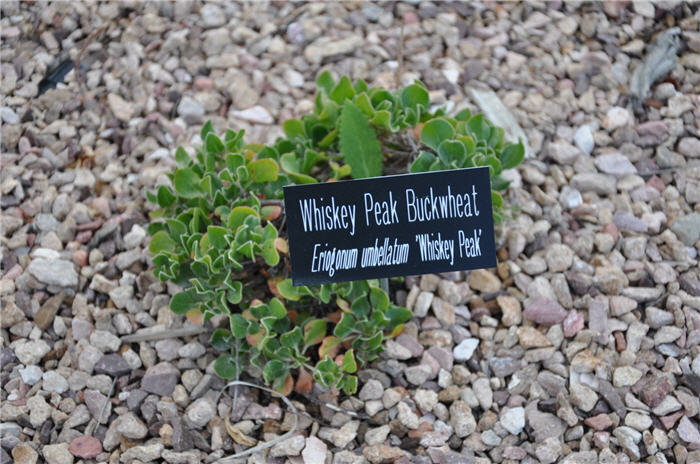| Botanical Name: Eriogonum umbellatum 'Whiskey Peak' | |
| Common Name: Whiskey Peak Sulfur Buckwheat |

-
Anatomy
-
Culture
-
Design
Plant Type
Shrub, Perennial
Height Range
Under 1'
Flower Color
Yellow
Flower Season
Summer
Leaf Color
Green, Grey Green
Bark Color
Brown
Fruit Color
n/a
Fruit Season
n/a
Sun
Full
Water
Low
Growth Rate
Moderate, Slow
Soil Type
Clay, Loam, Rocky
Soil Condition
Average, Poor, Well-drained, Dry
Soil pH
Neutral, Basic
Adverse Factors
Attracts Bees
Design Styles
Meadow, Mediterranean, Ranch, Spanish
Accenting Features
Showy Flowers
Seasonal Interest
Summer
Location Uses
Perennial Border, Parking Strip, Walkways, With Rocks
Special Uses
Small Spaces
Attracts Wildlife
Birds, Butterflies
Information by: Stephanie Duer
Photographer:
Photographer:
-
Description
-
Notes
Whiskey Peak Buckwheat grows about 12 inches tall and 24 inches wide, in dense mounds of green leaves backed in white. In June, Erect stems sport flowers of sulfur yellow that fade to red. Use in a rock garden, sunny dry perennial border, or parkstrip. Attracts bees, butterflies, and beneficial insects.
Grow in well drained soil in full sun to light shade, though, if planted in shade take extra care to not over water. Delay removing spent flowers until late winter or early spring as migrating and overwintering birds will appreciate the seeds. Very tolerant of poor, rocky or gravelly soils; it is most important that the soils are well drained. Hardy to -0 degrees. Also listed as E. polyanthum. Flowers dry well and are attractive in arrangements or for crafting (though you would have to decide between the competing interests of the birds and butterflies...) Not technically an evergreen, but the leaves persist well into the fall and winter months.